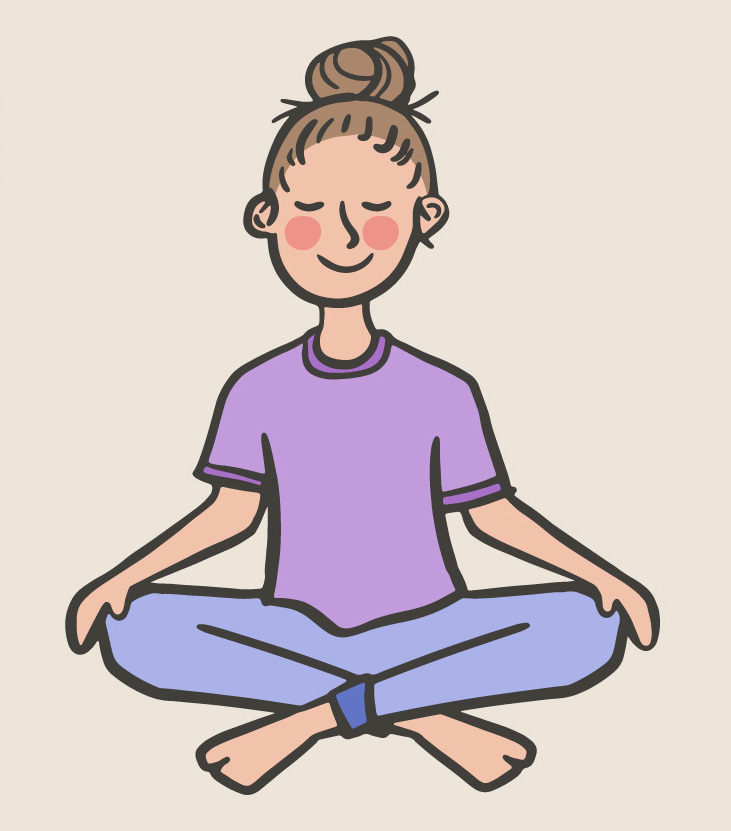 Many tools can help your children work through anxiety. These are strategies licensed mental health clinicians use with people in therapy, and research has found these strategies to be beneficial in treating and managing anxiety.
Many tools can help your children work through anxiety. These are strategies licensed mental health clinicians use with people in therapy, and research has found these strategies to be beneficial in treating and managing anxiety.
Strategies to help your child
1. Identify triggers.
A helpful first step is for you and your children to become aware of and recognize what causes them to feel intense anxiety. Once those triggers are identified, you can implement many of the tips below.
2. Validate and empathize.
Children’s thoughts, emotions and experiences are real to them. No matter how you think or feel about their experiences, it is important for your children to feel heard, validated and understood. Empathize with your children, imagine what it is like to be in their shoes, and recognize and affirm that their thoughts, feelings and experiences are valid and important.
3. Challenge unhelpful thinking.
Ask your children to talk you through the thoughts they are experiencing that are unhelpful and causing them distress, such as “I am going to fail my test and then fail my class.” Once you know what thoughts your children are telling themselves, you can work with them to identify more realistic, helpful thoughts. Ask questions to get them thinking about their situation differently and decrease their buy-in into their unhelpful thoughts, such as “What have you done in the past to pass a test? Have you done those things now?”
Self-realization is much more powerful than parents, teachers or peers telling children they will not fail.
4. Practice deep breathing.
Deep belly breathing is a tool to help calm down, refocus and think clearer. It increases oxygen levels in the bloodstream and decreases heart rate, breathing rate, muscle tension and stress level. Encourage them to use their bellies to breath. Instruct them to take deep breaths slowly in through the nose, hold and then out slowly through their mouth.
5. Break down tasks.
Break down tasks into smaller steps so the overall process feels less daunting. For younger children, have random rewards throughout the process to positively reinforce their behavior. For older children, provide positive praise and encourage them to reward themselves.
6. Role-play.
If your children are worried about specific situations, role-play those feared situations to help them prepare. Examples could include ordering at a restaurant, buying a movie ticket, asking a teacher for help or inviting friends over.
7. Build overall confidence.
Have your children perform tasks around the house to contribute to the family and build confidence. Offer your children opportunities to face challenges. It is important to praise their efforts and focus less on results.
Avoid doing the following:
8. Label emotions as bad.
Stay away from labeling their thoughts, emotions and experiences as good or bad. For example, do not say “It is bad to think you will fail.” When children hear that, their thoughts are bad, they often then internalize this and think “I am bad.”
9. Minimize anxiety.
Do not minimize your children’s experiences and tell them to “Just do it” or “Suck it up.” Their feelings of anxiety are real, and they are suffering.
If you want more support, consider talking with your child’s primary care physician who may connect you with a mental health clinician for assistance.
Excerpted from “9 tools for helping your child manage anxiety” from the Mayo Clinic. Read the full article online.
Source: Mayo Clinic | 9 tools for helping your child manage anxiety, https://www.mayoclinichealthsystem.org/hometown-health/speaking-of-health/9-tools-for-helping-your-child-manage-anxiety | © 2018 – 2023 Mayo Clinic Health System
Do you need someone to talk to? To schedule an evaluation or to get advice about your child’s or teen’s challenges, call or email a CHC Care Coordinator at 650.688.3625 or careteam@stage.chconline.org CHC teletherapy services are available now.





